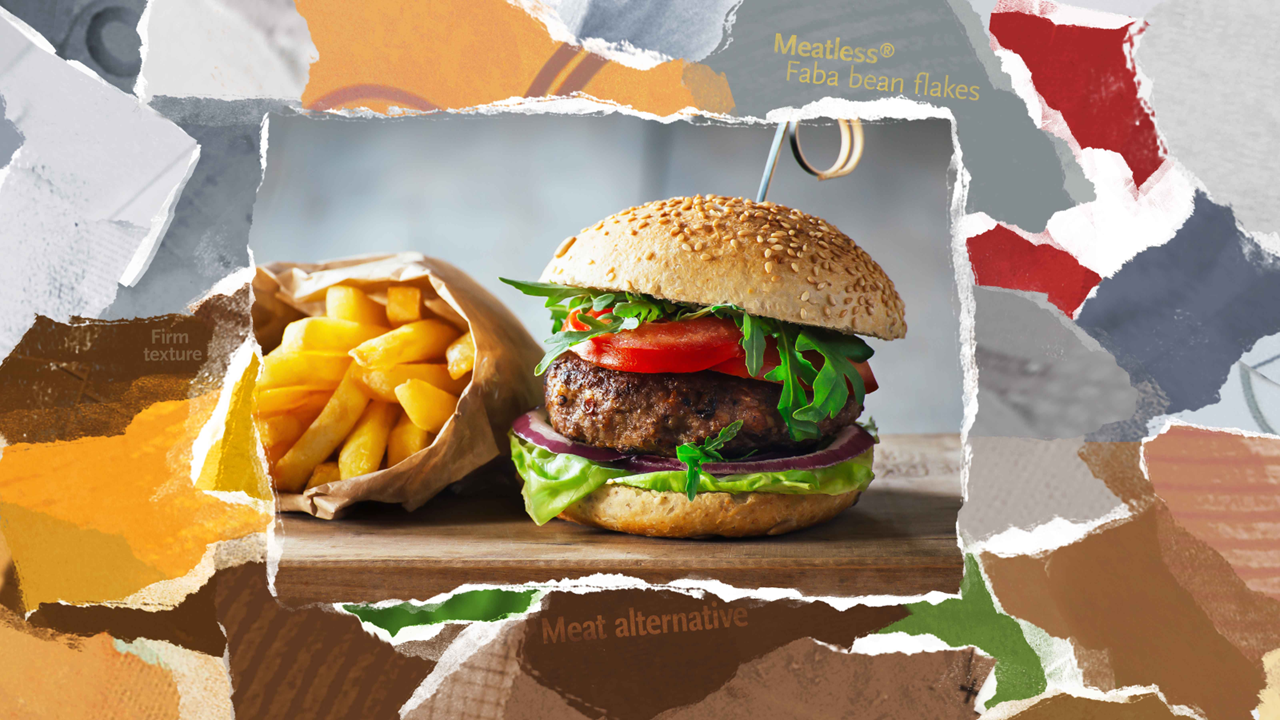It’s no secret that millennials are currently dominating the food space. This demographic, born between 1981 and 1999, has been noted to be one of the most selective consumer markets that the food industry has ever faced. As the largest segment of the US workforce, representing more than 80 million people, millennials possess extensive spending power, which makes them key targets for food manufacturers.
“Not only do millennials contribute to the market directly, but they also contribute as vocal consumers and early adopters to influence the purchases of others. They are also changing the means and speed by which marketplace information is exchanged. Millennials add content through constant connectedness and the popularity of social media, keeping marketers on their toes.” – – National Chamber Foundation Millennial Generation Research Review
Through understanding the millennial mindset, food companies can tailor their product portfolios to appeal to this growing market. There are five main categories that food manufacturers should look into when developing products for this powerful consumer demographic.
Back to The Kitchen
Although millennials place importance on convenience, they also enjoy putting in time to produce their own meals. A 2017 survey conducted by Peapod found that millennials are more likely to prepare meals at home than baby boomers. With 72 percent of Americans already claiming that they cook at home at least four times week, the report found that in 2017, over a third of survey respondents (34 percent) plan to cook even more meals per week. Out of the 34 percent, 49 percent of participants were millennials whereas 24 percent of these respondents were baby boomers. This trend is primarily because millennials associate home-made meals with freshness and healthiness.
The food industry is responding to this trend by incorporating the best of both worlds for this demographic: convenience meals in the form of meal kits that need to be hand-prepared at home. According to a Money survey, millennials are the largest demographic investing in meal kit services followed by Gen-Xers. However, the survey found that men were more likely to purchase meal kits than women.
Following this trend, major grocers have begun to introduce their own line of meal kits. Last year, Kroger introduced their line of “Prep+Pared” meal kits that feature pre-measured ingredients and easy to follow recipes. Supermarket chain Giants/Martins also launched pre-packaged meal kits in their stores three years ago. To add to the competition, Amazon recently debuted their own version of a meal kit last year. Most recently Walmart, one of the biggest grocers in America, announced the launch of their own branded meal kits as well.
With the meal kit delivery services market racking up billions in profits, it has been noted as a segment that is disrupting the food industry as a whole.
“A critic might say that meal kits are the culinary equivalent to paint-by-number, but the opposite is true,” said David Sprinkle, research director for Packaged Facts. “Meal kits and their illustrated recipes drive home the point, especially to Millennials and the rising Gen Z, that cooking is mostly about applying age-old, do-try-this-at home preparation techniques to fresh, whole foods and ingredients. That holds for learning how to cook, as well as expanding, increasing the healthfulness of, and internationalizing your home meal repertoire.”
Ingredients
The key to a good millennial-targeted food formulation is the use of functional ingredients. With millennials being more health-focused than any other generation, food manufacturers can appeal to this demographic through nutrition. By incorporating nutritionally dense ingredients or “superfoods” in food formulations, manufacturers can produce appealing products that are proven to find success in the current food space.
Another key food industry trend for the millennial demographic is organic and sustainable food products. As consumers become more educated on food production methods, they are starting to shift towards organic and sustainable sources for health and environmental reasons.
Although the production of such premium products come with an increased cost, millennials have shown that they are a demographic that puts their money where their mouths are. Currently, this demographic is the primary driver for taking organic, locally sourced, nutrient-dense food products to mainstream markets. According to The Future of Food: Are You Ready for the Millennials?, 68 percent of millennials are willing to pay extra for organic foods. In addition, 61 percent of millennials expect foods to be GMO-free and surprisingly, 54 percent expect ancient grains to be included as an ingredient in food formulations.
Such trends in health-conscious and environmentally-conscious shopping have led many major food companies like Nestle, Conagra, Kellogg and Unilever to invest in organic and sustainable food production. However, this segment also offers a lot of growth for small business owners and startups that are producing organic food products that stand out from traditional food and snack variations.
Values/Sustainability
In terms of values, millennials have been noted to be the most value-driven demographic in the food industry. They have no problem spending extra money on sustainably sourced food products if the environmental impact of production is minimal.
According to a Nielsen global online study, about 75 percent of respondents are willing to pay extra for sustainable food offerings . In fact, visible sustainability was one of the six most important consumer packaged goods (CPG) trends for millennials according to Forbes. This is because millennials are very conscious of the effects of food production on the environment and want to do their part in reducing their environmental footprints.
This demographic is also very image-conscious, which may be a result of their overexposure to social media. The products that they purchase, in their eyes, represent their beliefs and individuality. About half of millennials agree with this notion that food products represent themselves and how they fit in the world and about 59 percent of millennials are willing to pay extra for products that portray the right image. That is one of the reasons why this demographic supports sustainability in food purchases.
A good way for food manufacturers to stand out in this segment is through packaging. Packaging is the first point of contact between a consumer and a product and may be the last if the packaging is not appealing enough. This trend in sustainability has led fast food giant McDonalds to pledge to use 100 percent sustainable packaging by 2025. More recently, an Amsterdam supermarket chain, Ekoplaza, has launched a completely plastic free aisle that they will be implementing in all chains as soon as possible. These packaging trends have also led new startups to invest in biodegradable packaging.
Convenience
Consumers today are busier than ever and usually live an on-the-go lifestyle because of this new way of life. In response to this, food companies are investing in convenience products that are easy to carry and eat. According to Mintel’s Global Packaging Insights Director, Benjamin Punchard, because of this growing lifestyle trend, the snacks category is transitioning into an on-the-go nutrition industry.
“Snacks have historically been an occasional indulgence, something we might use as a treat to indulge ourselves. But now, as our lifestyles are changing we are increasingly snacking on-the-go as a way of supplementing or replacing our main meals,” Punchard told BakeryandSnacks.
When developing convenience foods, companies should consider how busy millennials can eat their products in the most easy and efficient way. Whether their product is a nutrition bar, nuts, or a small meal, food companies should look into what they can include with their packaging to make their products easily edible. Packaging applications such as a spoon, a dressing or seasoning, a napkin or a resealable zipper can make a huge difference in consumer choice.
“Think about a packaging format that suits someone who is travelling or seated on a train, bus or in a car. The packaging needs to offer on-the-go convenience such as packaging that can serve as a bowl, comes with a flat bottom, or a pop sound that resembles freshness when opening, anything that can save time on the go,” Paulina Dudkiewicz, Marketing Segment Manager of Snacks and Nut at Amcor told BakeryandSnacks.
Marketing/Branding
Marketing to this demographic is very different from marketing to previous generations because of how immersed millennials are in media. They are known as the “distracted audience” because of their multitasking habits when it comes to viewing media. Less than two percent of millennials watching TV change the channel when a commercial comes on because they are usually viewing media on multiple devices at the same time such as phones, computers and tablets. Traditional TV commercials alone may not be the best way to catch the attention of this demographic.
Food companies are advised to spread their product campaigns across various media outlets including social media, TV and websites. This way, companies are able to have a presence on all media channels and devices. Social media has proven to be the top marketing platform for millennials because of their regular participation on these platforms.
Companies are also able to target specific individuals within the millennial demographic through social media. Social media platforms like Facebook and Instagram offer ad targeting management options to clients so that their ads reach individuals who are likely to find their products appealing. This targeted ad technique uses a variety of algorithms that are dependent on an individual’s preferences on their social media platforms along with the influencers and social pages that they follow or visit online. By utilizing targeted social media ad systems, food manufacturers are more likely to directly reach their target consumers.
To build on these social media marketing techniques, food companies should invest in influencer promotion. Millennials are more likely to trust an individual that they follow and feel connected to than a large company or organization. By identifying these social media influencers, food companies can invest in promoting their products on influential social media channels. This futuristic word-of-mouth culture has proven to be successful for various product applications.
Millennials are a promising demographic for the food industry because of their buying power. The key to developing a good relationship with these consumers is through transparency and inclusiveness. Millennials like to feel connected to their products and like to feel as if they are in charge of their lives in every way. By considering millennial lifestyles when developing products for them, food companies are much more likely to find success with this demographic.











Join or login to leave a comment
JOIN LOGIN